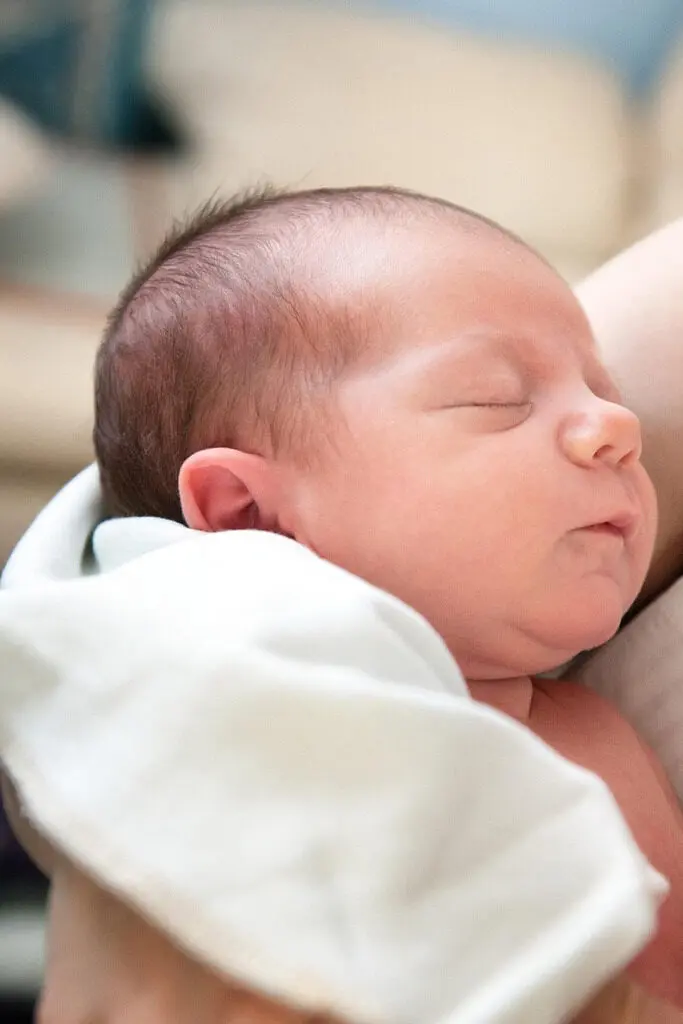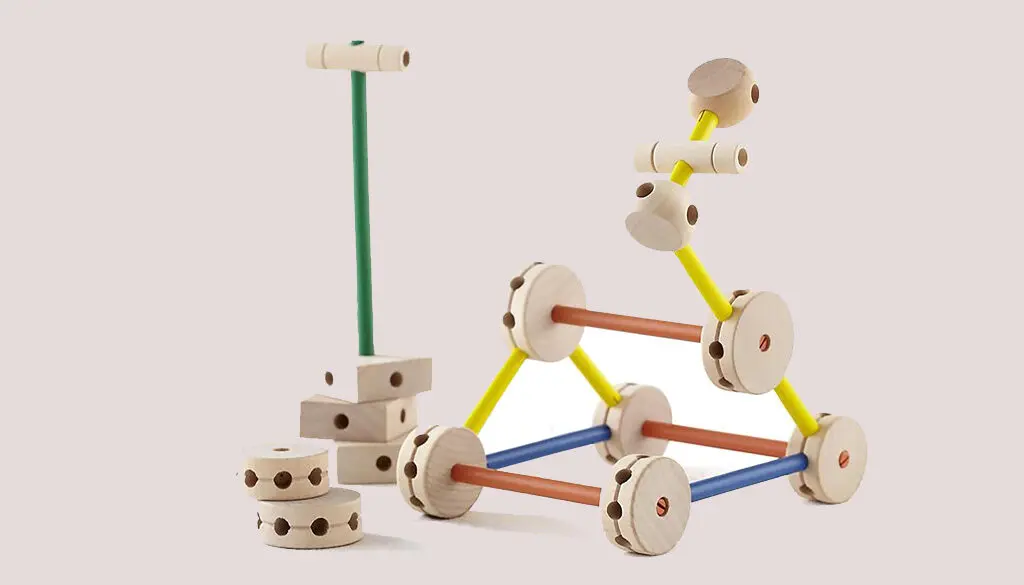Getting your little one to sleep soundly can be tough. But, with the right strategies, you can help them sleep well from the start.
As a new parent, it’s key to understand infant sleep patterns. Also, creating a bedtime routine that works for you is important. Our guide covers gentle sleep training and newborn bedtime tricks that really work.

By using these techniques, you’ll help your newborn get into a consistent sleep schedule. This ensures a peaceful night’s sleep for everyone in the family.
Key Takeaways
- Understand infant sleep patterns to create a effective bedtime routine.
- Gentle sleep training methods can help your newborn develop healthy sleep habits.
- Establishing a consistent sleep schedule is crucial for a restful night’s sleep.
- Newborn bedtime tricks can help soothe your little one to sleep.
- A well-rested family is a happier family.
Understanding Baby Sleep Patterns
Newborns sleep differently than adults. Knowing these patterns helps support your baby’s sleep. It’s key for healthy sleep habits from the start.
Normal Infant Sleep Cycles
Infant sleep cycles are short, lasting 20-30 minutes. They have active and quiet sleep. Active sleep shows rapid eye movements and twitching. Quiet sleep has slow breaths and little movement.

Why Babies Wake Frequently
Babies wake often because their stomachs are small. They need to eat every 2-3 hours. They’re also adjusting to the world and may wake up easily.
- Hunger and the need for feeding
- Discomfort or overtiredness
- Overstimulation from the environment
Developmental Sleep Changes
As your baby grows, their sleep changes a lot. Around 3-4 months, they sleep longer at night. Daytime sleep gets more regular. By 6 months, many sleep through the night, but it varies.
- Physical developments, such as rolling over and sitting up
- Cognitive developments, like understanding object permanence
- Emotional developments, including separation anxiety
Knowing these changes helps you adjust to your baby’s sleep needs.
Newborn Sleep Schedule: What to Expect
Understanding newborn sleep schedules takes patience and knowing their unique needs. The first weeks are a big adjustment. Setting up a routine can feel overwhelming.
First Weeks Sleep Patterns
Newborns sleep in short cycles, lasting 20 to 30 minutes. They sleep throughout the day and night. This is because they need to eat often and feel secure.
Being flexible and adapting to your newborn’s needs is key. As they grow, their sleep patterns will change. Knowing this helps you plan for the future.

Creating a Flexible Schedule
Having a flexible schedule is important for managing your newborn’s sleep. Start by watching your baby’s natural sleep patterns. Try to create a routine that fits these patterns.
- Look for sleep cues, like yawning or rubbing their eyes.
- Have a calming routine before sleep to signal it’s time.
- Be ready to adjust your schedule as your baby grows and their needs change.
Day vs. Night Confusion
Helping your newborn tell day from night is a big challenge for new parents. Newborns often get confused, mixing up day and night.
To help, expose your baby to natural light during the day. Keep the room dim at night. This helps their internal clock and improves sleep for both you and your baby.
Baby Sleep Tips: Essential Strategies for New Parents
Starting out as a new parent, figuring out baby sleep can feel overwhelming. But, with the right tips, you can ensure your baby sleeps safely and well. Good sleep is key for your baby’s growth and your family’s happiness.
Safe Sleep Guidelines
It’s vital to follow safe sleep rules to avoid risks. The American Academy of Pediatrics says babies should sleep on their backs. They should be on a firm mattress, without soft bedding, toys, or loose items that could suffocate them.
- Always place your baby on their back to sleep.
- Use a firm mattress and tight-fitting sheet.
- Keep the crib free of soft toys, blankets, and pillows.
Setting Up the Ideal Sleep Environment
Creating the perfect sleep space is key for your baby’s quality sleep. This means keeping the room cool, dark, and quiet.
A dark, quiet room at a comfortable temperature can work wonders for your baby’s sleep. White noise machines can help block out any noise that might wake your baby.
Managing Your Expectations
It’s important to manage your expectations about baby sleep. Babies sleep differently than adults. Being flexible and adjusting to your baby’s needs can help everyone sleep better.
By following these baby sleep tips, you can make a sleep-friendly environment. This not only helps your baby sleep better but also keeps them safe. Remember, every baby is unique, so find what works best for your family.
Establishing Healthy Sleep Habits from Day One
From the start, setting up healthy sleep habits is crucial for your baby. A few key strategies can help your baby develop good sleep habits. These habits will benefit them for their whole life.
Recognizing Sleep Cues
Learning to recognize your baby’s sleep cues is the first step. These cues are often subtle, like yawning, rubbing their eyes, or becoming less active. Paying attention to these signs helps you put your baby to bed before they get too tired.
- Yawning or eye rubbing
- Decreased activity or fussiness
- Staring into space or losing interest in surroundings
Preventing Overtiredness
Overtiredness makes it hard for your baby to fall and stay asleep. It’s important to watch for sleep cues and act fast. A consistent sleep schedule also helps regulate your baby’s sleep.
Here are some tips to avoid overtiredness:
- Put your baby to bed as soon as you notice sleep cues
- Avoid stimulating activities close to bedtime
- Create a calming bedtime routine
Consistent Sleep Associations
Creating consistent sleep associations is key to healthy sleep habits. This means setting up a routine or environment that your baby links with sleep. This could be a bedtime routine, a specific sleeping place, or even a pacifier. Consistency helps your baby learn to self-soothe and fall asleep more easily.
Some consistent sleep associations to consider include:
- A bedtime story or lullaby
- A dark, quiet sleep environment
- A consistent sleeping place, such as a crib or bassinet
Creating the Perfect Bedtime Routine for Babies
Bedtime routines bring comfort and predictability to your baby’s sleep. They help signal it’s time to relax and sleep well. A consistent routine tells your baby it’s almost bedtime.
Elements of an Effective Routine
A good bedtime routine includes calming activities. These can be a warm bath, reading, singing, or a gentle massage. The goal is to create a sequence your baby recognizes as sleep time.
The sleep environment is also key. Make sure the room is dark, quiet, and comfy. This can make your routine even more effective.
Timing Your Routine Right
Timing is everything in bedtime routines. Start early enough to avoid overtiredness but not so early it’s too soon. Aim for 20-30 minutes before bedtime.
Watch for sleep cues in your baby. Yawning or becoming less active means it’s time to start winding down.
Adjusting Routines as Baby Grows
As your baby grows, so do their needs and sleep patterns. It’s important to be flexible and adjust the routine. For example, older babies might need fewer naps or resist certain activities.
Adapting to these changes ensures your routine stays effective. It helps your baby sleep well through the night.
Gentle Sleep Training Methods That Work
Many parents find gentle sleep training methods more nurturing than traditional methods. These methods help create a healthy sleep routine while keeping a strong bond with your baby.
The Fading Method
The fading method slowly reduces the help your baby gets to fall asleep. You can do this by decreasing nighttime feedings or the rocking needed. It’s a gentle way to help your baby learn to fall asleep on their own.
Pick-Up-Put-Down Technique
This method involves picking up your baby when they’re upset, comforting them, and then putting them back in bed. You repeat this until your baby learns to fall asleep alone. Being patient and consistent is key.
Chair Method
In the chair method, you sit next to your baby’s bed as they fall asleep. Then, you move the chair further away until you’re out of the room. This helps your baby get used to sleeping without you right there.
When to Start Sleep Training
When to start sleep training depends on your baby’s age, health, and development. Most doctors say to start between 4 to 6 months. But, it’s important to think about your baby’s unique needs.
Some things to consider when starting sleep training include:
- Your baby’s health and any medical conditions
- Your baby’s age and developmental stage
- Your family’s lifestyle and schedule
Choosing a gentle sleep training method that fits your baby’s needs can help them develop good sleep habits. These habits will benefit them for many years.
How to Get Baby to Sleep Through the Night
Many parents want their babies to sleep through the night. Knowing the right strategies is key. As your baby grows, their sleep patterns change. What works at one age might not work at another.
Setting realistic expectations and understanding feeding and sleep are crucial. This helps you create a plan for your baby’s nighttime sleep.
Realistic Expectations by Age
It’s important to know when your baby can sleep through the night. Newborns (0-3 months) wake up every 2-3 hours for feeding. Babies between 4-6 months may sleep longer.
By 6 months, many babies can sleep all night. But, every baby is different. They may sleep through the night or not.
| Age | Sleep Expectations |
|---|---|
| 0-3 months | Frequent waking for feeding |
| 4-6 months | Longer sleep stretches, but still waking occasionally |
| 6+ months | Potential to sleep through the night, but may vary |
Feeding and Sleep Connection
The link between feeding and sleep is key, especially early on. Breastfed babies might need to eat more often than formula-fed ones. As your baby grows, a feeding schedule that supports sleep is crucial.
Gradual Night Weaning
Gradual night weaning helps your baby sleep through the night. It involves reducing nighttime feedings or interactions slowly. Start by cutting out unnecessary feedings or interactions.
Be patient, as this process can take weeks or months. It’s a journey to help your baby sleep better.
Understanding your baby’s sleep needs and setting realistic expectations are key. Gradual night weaning also helps. Remember, every baby is unique. Be flexible and seek help if needed.
Improving Baby’s Nap Time Success
To improve your baby’s nap time, focus on the right conditions and routines. Naps are key to your baby’s sleep routine. Better nap times can greatly improve their sleep quality.
Optimal Nap Environments
A good sleep environment is essential for better naps. The room should be dark, quiet, and at a comfy temperature. A dark room helps your baby’s body clock, and a quiet space keeps them from waking up.
Experts say a sleep-friendly room can greatly boost your baby’s nap quality.
“The key to successful napping is creating an environment that signals to your baby that it’s time to sleep.”
- Use blackout curtains to keep the room dark.
- Maintain a comfortable room temperature.
- Minimize noise with white noise machines.
Age-Appropriate Nap Schedules
It’s important to have a nap schedule that fits your baby’s age. The number and length of naps change as they grow.
| Age | Number of Naps | Total Nap Time |
|---|---|---|
| 0-3 months | 4-5 | 6-8 hours |
| 4-6 months | 3-4 | 3-4 hours |
| 7-12 months | 2-3 | 2-3 hours |
Troubleshooting Short Naps
Short naps can be tough, but there are ways to make them longer. Watch for signs of being too tired before nap time.
If your baby wakes up quickly, try changing their sleep spot or routine. A small tweak can make a big difference.
- Check for overtiredness.
- Adjust the nap schedule as needed.
- Ensure the sleep environment is optimal.
Toddler Sleep Training: Navigating New Challenges
As children grow into toddlers, their sleep patterns change. They start to assert their independence and explore. It’s important to understand these changes to help them sleep better.
Transitioning from Crib to Bed
One big step for toddlers is moving from a crib to a bed. This change can be exciting and scary for parents. It’s key to involve your toddler in choosing their new bed or bedding.
Begin the transition slowly. Start by having your toddler nap in the big bed. Then, they can sleep there for a few hours before going back to the crib. Being patient and consistent is crucial.
Dealing with Bedtime Resistance
Bedtime resistance is common in toddlers. A consistent bedtime routine helps signal sleep time. This can include bath time, reading, or singing lullabies.
Setting clear boundaries and being consistent is also important. Avoid giving in to demands that can create unhealthy sleep habits. This means not letting them stay up late or needing you to fall asleep.
Managing Night Wakings
Night wakings can be tough for toddlers and parents. It’s important to find out why they wake up. Is it hunger, discomfort, or nightmares?
If it’s hunger, adjust their feeding schedule. For discomfort or nightmares, reassure them without making them dependent on you. This helps them learn to fall back asleep on their own.
By understanding and addressing these challenges, parents can help their toddlers develop good sleep habits. These habits will benefit them for the rest of their lives.
Essential Sleep Products for Better Baby Sleep
Choosing the right products can greatly improve your baby’s sleep. The sleep environment is key to quality sleep. The right sleep products help create a sleep-friendly space.
Newborn Sleep Sacks and Swaddles
Newborn sleep sacks and swaddles offer comfort and security, like the womb. They help reduce the startle reflex, leading to better sleep. It’s important to pick the right material and size for your baby’s comfort and safety.
Here’s a look at different newborn sleep sacks and swaddles:
| Product | Material | Size | Price |
|---|---|---|---|
| Halo SleepSack | Cotton | Small, Medium, Large | $15-$25 |
| Aden + Anais Swaddle | Muslin | Small, Medium | $10-$20 |
| SwaddleMe Original Swaddle | Cotton | Small, Medium, Large | $5-$15 |
Comfort Items: From Cashmere Baby Blankets to Waffle Bed Blankets
Comfort items like cashmere baby blankets and waffle bed blankets add comfort to your baby’s sleep space. Cashmere is soft and warm, while waffle blankets offer a soothing texture.
White Noise Machines and Sleep Aids
White noise machines are vital for better baby sleep. They create a constant sound that blocks out other noises. Look for a machine that’s compact, easy to use, and has various sounds.
Some top white noise machines include:
- Hatch Rest
- Lekueo White Noise Machine
- Marpac Dohm
Using these sleep products can make your baby’s sleep routine better. Remember, every baby is unique, so you might need to try a few options to find what works best.
Troubleshooting Common Sleep Problems
Baby sleep problems can be tough, but there are ways to fix them. Sleep issues can pop up, even when you try your best. It’s key to know how to tackle them for your baby’s health and yours.
Sleep Regressions
Sleep regressions happen when your baby’s sleep changes. This can be due to growth or new skills. It’s tough, but you can get through it.
To handle sleep regressions, keep a regular sleep routine. But also be ready to make small changes. Sometimes, a little tweak can make a big difference.
Dealing with Illness and Sleep Disruptions
Being sick can mess up your baby’s sleep. It’s hard to keep a steady sleep schedule when they’re not feeling well. When your baby is sick, they need comfort and reassurance.
To lessen the sleep impact of illness, make sure your baby is cozy. You might need to tweak their sleep space. A humidifier or a cooler room can help them feel better.
Nighttime Fears and Separation Anxiety
As your baby gets older, they might start to fear the dark or worry about being away from you. A soothing bedtime routine can help calm these fears.
For separation anxiety, start by giving your baby more independence during the day. This can make them feel more secure at night, reducing anxiety wake-ups.
Understanding and addressing common sleep issues can lead to better sleep for your baby. It also improves your own well-being.
Conclusion: Creating Your Personalized Baby Sleep Plan
Creating a personalized baby sleep plan needs patience and understanding of your baby’s needs. Follow the baby sleep tips and gentle sleep training methods in this article. This will help your baby develop good sleep habits for life.
A good sleep plan fits your baby’s unique needs, like age and temperament. Begin with a consistent sleep routine. Use gentle sleep training to help your baby learn to fall asleep on their own.
When making your personalized baby sleep plan, be ready to adjust as your baby grows. With time and consistency, your baby will have a sleep routine that suits your family.






